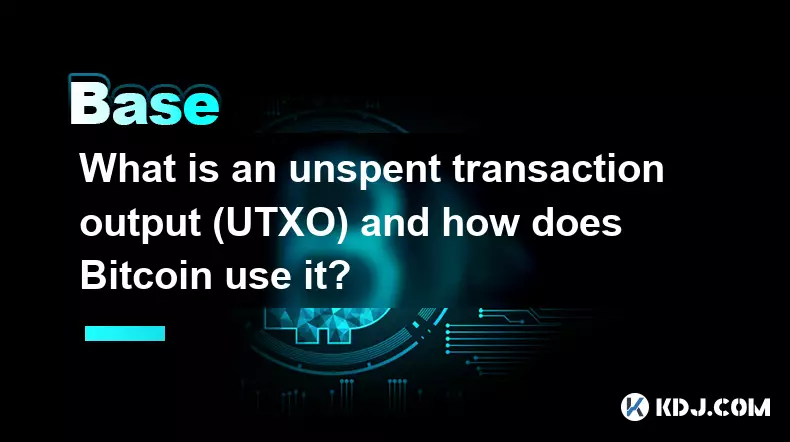-
 bitcoin
bitcoin $95122.959084 USD
-0.06% -
 ethereum
ethereum $3142.532402 USD
-0.28% -
 tether
tether $0.999439 USD
0.01% -
 xrp
xrp $2.209207 USD
-2.80% -
 bnb
bnb $925.395975 USD
0.07% -
 solana
solana $138.662599 USD
-1.73% -
 usd-coin
usd-coin $0.999753 USD
-0.02% -
 tron
tron $0.294100 USD
0.03% -
 dogecoin
dogecoin $0.161321 USD
0.35% -
 cardano
cardano $0.498672 USD
-1.53% -
 hyperliquid
hyperliquid $38.406659 USD
1.34% -
 zcash
zcash $679.663571 USD
5.44% -
 bitcoin-cash
bitcoin-cash $501.381807 USD
3.53% -
 chainlink
chainlink $13.975571 USD
-0.64% -
 unus-sed-leo
unus-sed-leo $9.166130 USD
-0.37%
What is a verifiable random function (VRF) and why is it important for Web3?
Verifiable Random Functions (VRFs) enable trustless, tamper-proof randomness in blockchains, ensuring fair and transparent outcomes in DeFi, NFTs, and consensus mechanisms.
Nov 17, 2025 at 12:20 am

Understanding Verifiable Random Functions in Blockchain
1. A verifiable random function (VRF) is a cryptographic primitive that produces a pseudorandom output along with a proof that the output was computed correctly. Unlike standard hash functions, VRFs allow anyone to verify that the result wasn’t manipulated without revealing the secret key used in the computation.
2. In Web3 environments, where trustless systems dominate, ensuring fairness and unpredictability in processes such as leader election, lottery draws, or NFT minting is crucial. VRFs provide a mechanism to generate randomness that cannot be predicted or tampered with by any single party.
3. The core components of a VRF include a private key for generating the random value and proof, and a public key for verification. This asymmetric design ensures that only the holder of the private key can produce the output, but anyone with the public key can confirm its validity.
4. One of the major challenges in decentralized networks is achieving true randomness. Traditional methods relying on block hashes or timestamps are vulnerable to manipulation by miners or validators. VRFs eliminate this risk by decoupling randomness generation from observable network activity.
5. Protocols like Algorand and Cardano have integrated VRFs into their consensus mechanisms to randomly select block proposers in a way that is both unpredictable and publicly verifiable, strengthening resistance against targeted attacks.
The Role of VRFs in Decentralized Applications
1. In decentralized finance (DeFi), VRFs are used to fairly distribute rewards, allocate scarce resources, or trigger conditional events based on random outcomes. For instance, yield farming programs may use VRFs to determine which users receive bonus tokens.
2. Non-fungible token (NFT) projects leverage VRFs during minting phases to ensure that rare traits are assigned fairly. Without VRFs, developers could potentially influence trait distribution, leading to accusations of insider manipulation.
3. Gaming platforms built on blockchain utilize VRFs to resolve in-game events such as loot drops or battle outcomes. Players can independently verify that results were not predetermined or altered by the game operator.
4. Smart contracts calling VRFs typically interact with oracle services like Chainlink’s VRF, which acts as a trusted source of randomness. These oracles generate the random number and attach a cryptographic proof that gets validated on-chain before the result is accepted.
5. Because the proof is published on the blockchain, auditors and users can retroactively confirm the integrity of every random draw, enhancing transparency and user confidence in the system’s fairness.
Security Advantages of VRFs in Consensus Design
1. In proof-of-stake networks, adversaries may attempt to predict who will validate the next block to launch timing or denial-of-service attacks. VRFs prevent such targeting by making validator selection unpredictable yet verifiable.
2. When a node computes its eligibility using a VRF, it broadcasts both the result and the proof. Other nodes can verify whether the claim is legitimate without knowing the node’s private key, preserving security while enabling decentralization.
3. VRF-based leader selection reduces centralization pressure because no coordination is needed among participants to agree on randomness. Each node independently checks eligibility, streamlining the consensus process.
4. The deterministic nature of VRFs means that given the same input and key, the output will always be identical. This consistency allows nodes to recompute values locally and detect fraudulent claims, reinforcing network-wide trust.
5. Compared to multi-round randomness schemes that require communication between nodes, VRFs minimize latency and message overhead, making them ideal for high-throughput blockchains.
Challenges and Implementation Considerations
1. While VRFs enhance security, they rely heavily on proper key management. If a participant’s private key is compromised, an attacker could forge valid-looking random outputs and proofs.
2. Generating and verifying VRF proofs consumes computational resources and increases transaction costs. Blockchains with limited gas budgets must balance security needs against performance constraints.
3. Integration with existing smart contract ecosystems requires standardized interfaces. Projects deploying VRFs must ensure compatibility with wallets, explorers, and developer tools to maintain usability.
4. Some implementations depend on external oracle networks, introducing potential points of failure. Redundancy and reputation systems are often employed to mitigate risks associated with third-party providers.
5. Misuse of VRF inputs—such as reusing seeds or predictable context data—can undermine the security guarantees. Developers must carefully design how inputs are derived to prevent exploitation.
Frequently Asked Questions
How does a VRF differ from a regular hash function? A VRF produces both a pseudorandom output and a cryptographic proof that can be verified using a public key. Regular hash functions do not provide provable correctness tied to a secret key, making them unsuitable for trustless randomness verification.
Can VRFs be manipulated by miners or validators? No, because the randomness is generated using a private key and verified through a public proof. Even if a validator sees the output, they cannot alter it without invalidating the proof, which would be detected by the network.
Why do some protocols combine VRFs with other randomness sources? Combining VRFs with additional entropy sources increases resilience against cryptographic breaks or implementation flaws. It also mitigates risks if one component becomes compromised over time.
Is Chainlink’s VRF the only option available for Ethereum dApps? While Chainlink’s VRF is widely adopted, alternatives exist such as DECO, SKALE’s random number generator, or custom implementations using BLS signatures. Choice depends on security model, cost, and integration requirements.
Disclaimer:info@kdj.com
The information provided is not trading advice. kdj.com does not assume any responsibility for any investments made based on the information provided in this article. Cryptocurrencies are highly volatile and it is highly recommended that you invest with caution after thorough research!
If you believe that the content used on this website infringes your copyright, please contact us immediately (info@kdj.com) and we will delete it promptly.
- Pennies Worth Millions? The Great American Coin Debate
- 2025-11-17 09:05:01
- MoonBull, Crypto, XLM: Spotting the Next Big Thing in the Wild World of Crypto
- 2025-11-17 09:05:01
- Bitcoin, Crypto, and Presales: Navigating the Next Wave of Opportunity
- 2025-11-17 08:55:01
- Grayscale, XRP Army, and Action: Decoding the Latest Moves in Crypto
- 2025-11-17 08:55:01
- Bitcoin's Bumpy Ride: Will It Rebound or Retreat?
- 2025-11-17 08:50:01
- MYX Finance: Navigating Liquidity Setbacks and Charting a Course to $3
- 2025-11-17 08:50:01
Related knowledge

What is the difference between a transparent and a shielded transaction?
Nov 10,2025 at 05:59pm
Understanding Transparent Transactions in Cryptocurrency1. Transparent transactions are the standard form of transaction on most public blockchains li...

What is a "crypto airdrop farmer" and what strategies do they use?
Nov 09,2025 at 03:39pm
What Is a Crypto Airdrop Farmer?1. A crypto airdrop farmer is an individual who actively participates in blockchain projects to qualify for free token...

What is an unspent transaction output (UTXO) and how does Bitcoin use it?
Nov 12,2025 at 01:40am
Understanding the Concept of Unspent Transaction Output (UTXO)1. An Unspent Transaction Output, commonly referred to as UTXO, is a fundamental compone...

What is a "governance attack" and how can a DAO be compromised?
Nov 14,2025 at 05:59am
Understanding Governance Attacks in Decentralized Autonomous Organizations1. A governance attack occurs when an individual or group gains disproportio...

How do you track a crypto portfolio across multiple wallets and chains?
Nov 12,2025 at 04:19pm
The Evolution of Decentralized Exchanges in the Crypto Ecosystem1. Decentralized exchanges (DEXs) have transformed how users trade digital assets by r...

What is a "rug pull" clause in a smart contract and how can you spot it?
Nov 14,2025 at 11:40pm
Understanding the Concept of a Rug Pull in Decentralized Finance1. A rug pull refers to a malicious act in the cryptocurrency space where developers a...

What is the difference between a transparent and a shielded transaction?
Nov 10,2025 at 05:59pm
Understanding Transparent Transactions in Cryptocurrency1. Transparent transactions are the standard form of transaction on most public blockchains li...

What is a "crypto airdrop farmer" and what strategies do they use?
Nov 09,2025 at 03:39pm
What Is a Crypto Airdrop Farmer?1. A crypto airdrop farmer is an individual who actively participates in blockchain projects to qualify for free token...

What is an unspent transaction output (UTXO) and how does Bitcoin use it?
Nov 12,2025 at 01:40am
Understanding the Concept of Unspent Transaction Output (UTXO)1. An Unspent Transaction Output, commonly referred to as UTXO, is a fundamental compone...

What is a "governance attack" and how can a DAO be compromised?
Nov 14,2025 at 05:59am
Understanding Governance Attacks in Decentralized Autonomous Organizations1. A governance attack occurs when an individual or group gains disproportio...

How do you track a crypto portfolio across multiple wallets and chains?
Nov 12,2025 at 04:19pm
The Evolution of Decentralized Exchanges in the Crypto Ecosystem1. Decentralized exchanges (DEXs) have transformed how users trade digital assets by r...

What is a "rug pull" clause in a smart contract and how can you spot it?
Nov 14,2025 at 11:40pm
Understanding the Concept of a Rug Pull in Decentralized Finance1. A rug pull refers to a malicious act in the cryptocurrency space where developers a...
See all articles

























![Coin Master Hack Spins 2025 ✅ Coin Master Free Spins[ Android _ iOS ] [LINK IN COMMENT] Coin Master Hack Spins 2025 ✅ Coin Master Free Spins[ Android _ iOS ] [LINK IN COMMENT]](/uploads/2025/11/16/cryptocurrencies-news/videos/6919c627821e7_image_120_90.webp)
















































